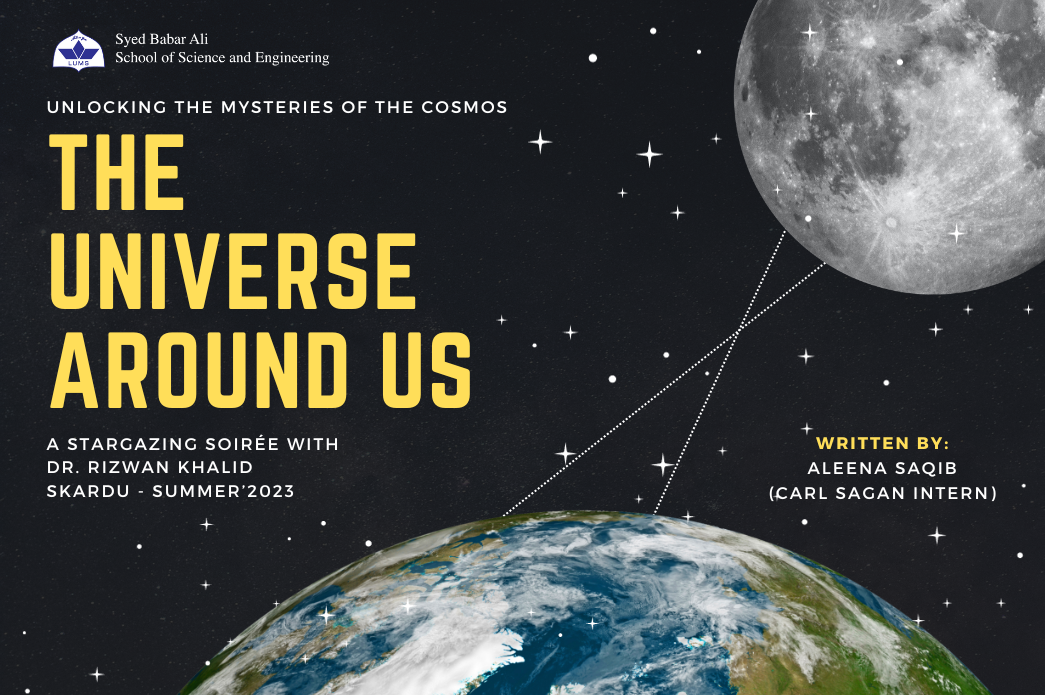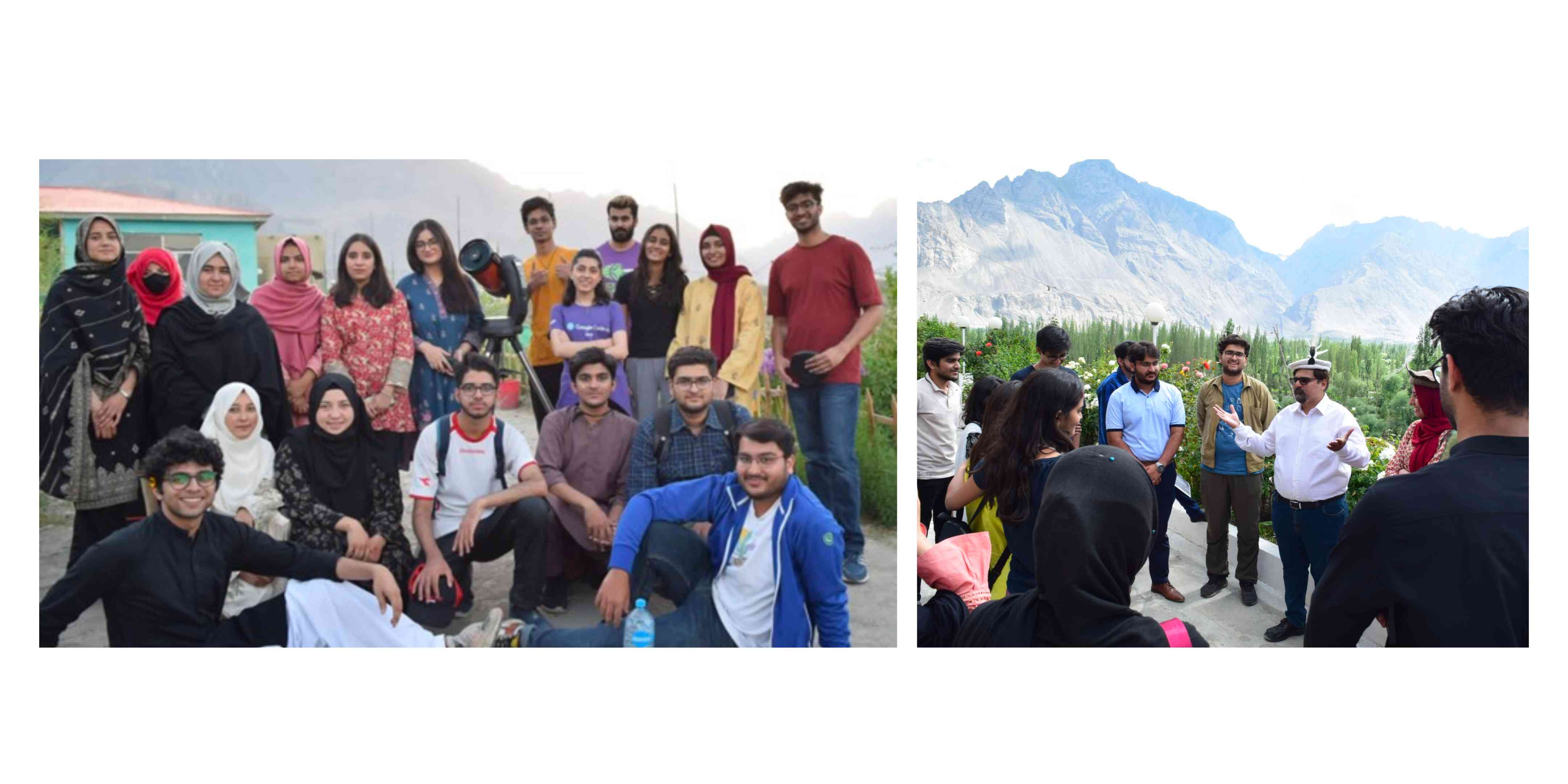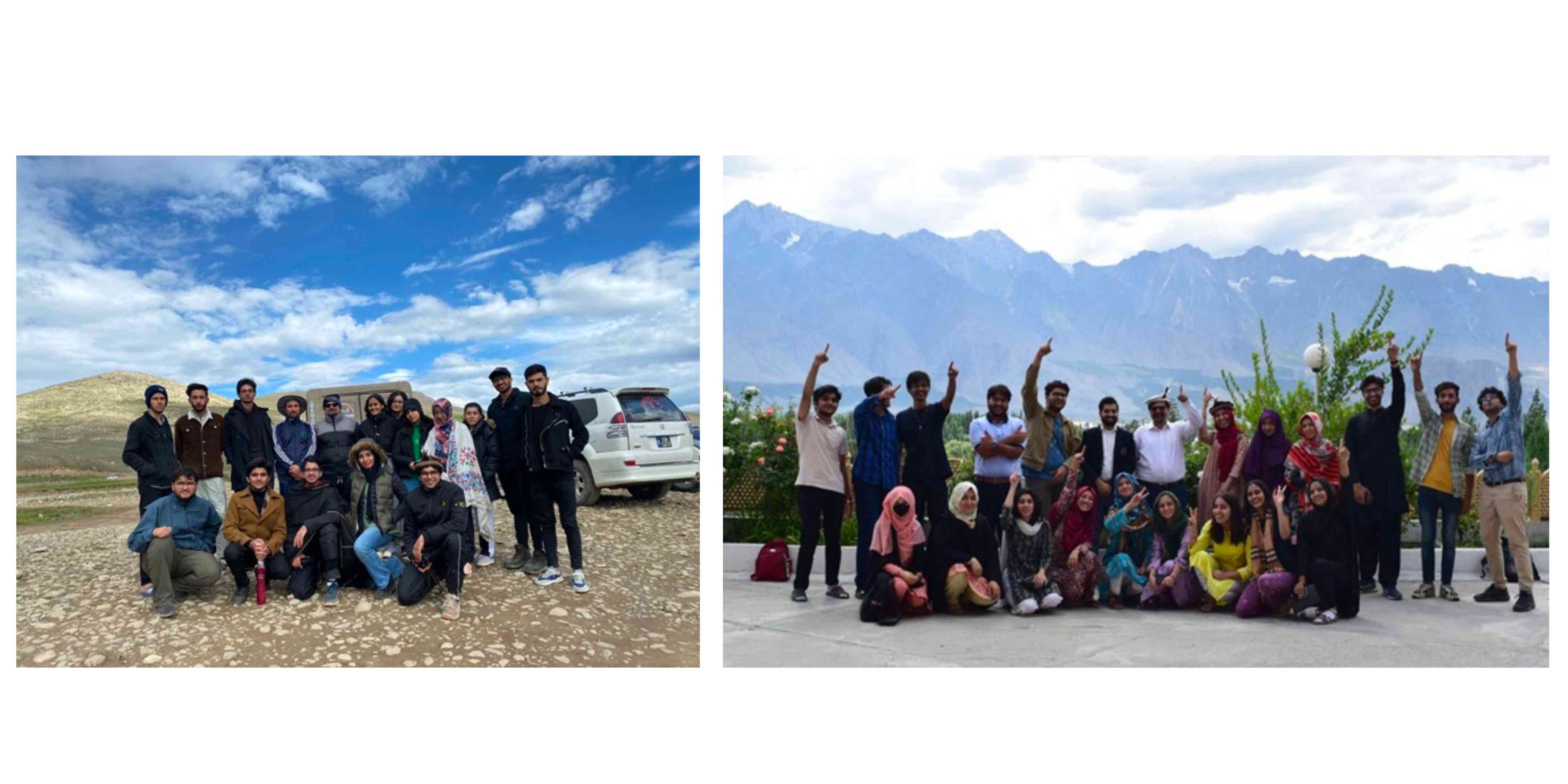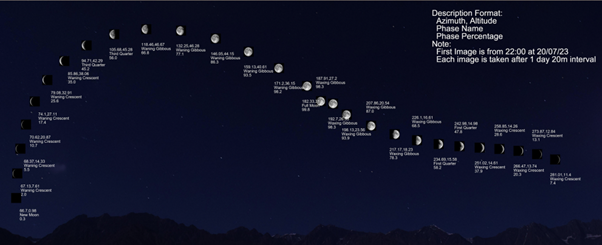
A stargazing soirée with Dr. Rizwan Khalid in Skardu
Picture a cohort of wide-eyed students, their faces inked in the soft glow of moonlight, huddled beneath a tapestry of stars that claims vision and periphery as its own. With snow-clad peaks standing sentinel, they have assembled atop a remote plateau, their telescope aimed toward the heavens. Peering into the eyepiece teleports them into a realm where galaxies collide, stars are born, and planets dance in their celestial ballet.
Such was the instructional atmosphere created by Dr. Rizwan Khalid and Dr. Sabieh Anwar in the Astronomy course offered in Skardu during Summer, 2023. Course, titled ‘The Universe Around Us’, probed at and sought to illuminate the physical basis of our placement in this Cosmos, and by extension, our understanding of it.
“How did we even figure out that there was something beyond our galaxy and then how do we understand the scale of the universe as a whole?” Dr. Rizwan Khalid leveraged such questions to root the foundation of the course. The course content itself was consciously fashioned in a ‘comprehensive manner’, with an added focus on deriving historical context from Greek and Babylonian estimation of planetary sizing. In directing a majority of the lectureship, Dr. Rizwan further iterated parallels in the sheer closeness of modern day calculations to these supposedly ‘pre-dated’ ones. The simple handheld devices available then stand in stark comparison to the tools we leverage now, ranging from infrared telescopes to space-based observatories.

The locality was an integral asset to the course, allowing the instructors to tangibly narrate methods to compute the distance scale of the universe. The clear night skies of Skardu lent themselves seamlessly to a visual narration of the different phases of the moon and eclipses. This expedition was graciously armed with a high-power telescope too, an emissary that conjured Saturn’s rings into view, allowing students to indulge in astrophotography to their liking.

The course actively entertained efforts to debunk Astrology for its inherent irrelevance to anything concretely scientific. Theoretical conversations on Einstein’s gravity pertaining to an expanding universe, were rooted within more practical elements such as diligent maintenance of a moon journal documenting the trajectory of it across the night sky. It all tied itself together with a poster presentation capturing individual pursuits in whatever resonated most with the students involved.
“I dont think I can ever look up to the night sky again and not instinctually look for Ursa Major and Polaris”, said Abdul Rafay in his closing presentation. Sentiments like these epitomise the deep-rooted shift triggered by the course, with each student indelibly moved by the cosmic odyssey that had revealed itself in the abyss above. Said shift was more than a flame ignited and then allowed to fizzle out - individual intrigue was given space to wander and indulge itself. From this emerged presentations on the existence of dark matter within the cosmos and such towards the end.
The tapestry of stars that had initially evoked wonder, now stood woven into the fabric of their souls, the mountains of Skardu fondly witnessing this transformation.


